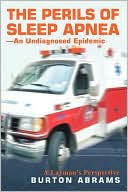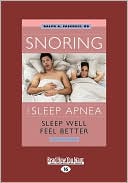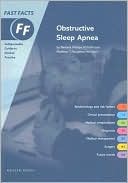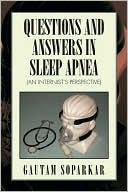Find Sleep and CPAP on Facebook at
www.facebook.com/sleepandcpap
Come on by and take a look!
Monday, July 26, 2010
What to expect at a Sleep Study

"Will you be able to see my dreams?" is my favorite question from a sleep study first timer. The answer is actually, no. But, we can tell when you are in R.E.M (Rapid Eye Movement) stage of sleep. REM is the stage of sleep in which people dream. But, I'm getting the cart ahead of the horse. Now, what can you expect at a sleep study?
First, showing up to your appointment at the designated time is important. Even though you may not go to bed until 11PM, if your appointment is at 8:30PM, you should get there at that time. Many times, the sleep center staff will want you to fill out some paperwork pertaining to your insurance, basic info about you, and also information regarding how you sleep as well as a basic medical history. If you can, try to get a copy of the questionnaire before hand. It will save you some writing. Some sleep labs will send you a packet before your appointment date with this in it. Enough with the paper work, let's get to the nuts and bolts.
When you get to the sleep center, your technologist or technician will show you to your room. I believe all sleep centers provide their patients with a private room these days. The room usually has a decent bed, bedside stand, a television with remote and sometimes a bathroom right off the room or close by. Once in your room, your tech will explain to you a little about the "hook up" and what we are looking for.
The hook up consists of a series of wires and belts and takes from 45 minutes to one hour to complete. Most of the wires attach to your head. There will be about 25 leads attached all together. This exact number varies from lab to lab, but 25 is pretty close. Most of the leads attach to your scalp. Those leads are picking up brain waves. From your brain waves, we can tell if you are awake or asleep and also the quality of your sleep. When you are asleep, the stage of sleep you are in can be determined. In all, there are 4 stages of sleep: Stage 1, stage 2, stage 3 and REM.
Some of the other things we monitor with the leads on your head are eye movements and muscle activity on your chin. We look at the muscle on your jaw or chin in order to see if you grind your teeth as well as help detect when you go into REM.
Beneath your nose, you will have a cannula or a similar device to detect when you breathe in and when you breathe out.
Moving on farther South, to your neck, you will have a snore microphone taped on or near your throat.
Moving down a little further down, at least 2 ekg patches will be on your chest to pick up your heart beat.
Continuing on, two elastic bands will go around your chest and abdomen. These bands or belts will sense your effort breathing. I'm sure everyone has noticed that when you breathe in and out, your chest goes up and down. That is precisely what these belts pic up. Don't worry, we are almost finished!
Next are the leg leads. Either one or two leads will attach to each shin. These leads detect leg movements. By detecting leg movements, doctors can diagnose Restless Leg Syndrome among other movement disorders.
Okay, last, but not least is the Pulse/Ox. Tech's usually attach this to the finger. I think most of us may be familiar with this, it usually clips to your finger and lights up red. Well, there you have it! You just got hooked up for a polysomnogram! Look at the picture on the top of this page. That is Joe Rogan wired up for a sleep study. Just beneath, is a child hooked up for a sleep study. Note on the picture below, you can see more of the wires attached to your scalp. The lead placement from adults to children is virtually identical. What in the world does all this data look like?

I'll answer that question with a question. Have you ever seen a polygraph test in the movies? It has the pens going up and down as the paper rolls on by. When the person acts or reacts to something, the pens will go up and down more drastically. That is the same technology as what we use for sleep studies or polysomnograms. Except today, we use computers. On the tech's computer monitor, the squiggly lines scroll on by as the test goes on. Take a look at the picture below for an example of what a portion of a polysomnogram looks like.

And now, the million dollar question: How am I supposed to sleep with all this stuff on me? Certainly you know all of that "stuff" is there once you lay in bed. But, once you lay down, you will get used to it. Also, once you lay in bed, you don't feel the weight of the wires pulling. Not that they are heavy. The wires are light. But, you can just tell when something is hanging from you. So, when you lay down, you don't feel it as much is my point.
Do the best you can is all that we ask. We know it won't be the same as crawling into your super king at home along with your significant other, favorite assortment of pillows, and pets. All we really need is a few hours of sleep. But, the more, the merrier.
If you are invited back for a second night with CPAP, BiPAP, or xPAP, you can expect the same thing. All the wires will go on again. The only thing different will be a little practice time with PAP and getting fitted with a mask.
What do you bring to a sleep study? Be sure to bring comfortable clothes to sleep in. Usually shorts or sweats and a t-shirt work well. Some people like to bring a fan while others bring ear plugs. The reasons are many behind the items certain people bring. If it can make you feel more comfortable, bring it! Other items I have seen people bring include: body pillow, eye mask, a book, a flashlight, an i-pod, a lap top computer, a camera, even a framed picture! If you are not sure if it is OK, just give the lab a call.
The most important thing to remember about your sleep study is to relax and not worry. You are not there to perform for the techs or doctors. You are there for yourself and your health. Just kick back and relax. Good Luck!
Thursday, July 8, 2010
Too Hard To Exhale
They tell you that you don't sleep well because your not breathing well. Then, they put the mask on you and say that this will help you breathe? All the while you feel like you are struggling to exhale and maybe even feeling smothered.
"It's too hard to exhale." "I feel like I'm being smothered." These are common statements I hear in the Sleep Center from patients new to CPAP or any xPAP. Let me tell you it is normal to feel that way at first.

So, why is it more difficult to exhale? What is happening is you are breathing against a predetermined pressure. When you breathe against the pressure, it increases the air pressure in your airway. When that happens, your airway blows up like a balloon, but not as drastically of course. It opens your airway just enough to allow the free flow of air. This is called Positive Pressure Support. Some refer to this as an air splint also.
If you look at the diagrams above, note the airway is closed off in certain places. This is what happens when somebody is snoring or even worse, having an apnea or hypopnea. With xPAP therapy, doctors have found a way to keep the airway open, or supported, in order to allow air to flow, back and forth, freely.
Take a look at the diagram below. It shows an open airway. The Positive Air Pressure gently forced the tissue apart that was "clogging" or obstructing the airway.

Enough with the mechanics. How is somebody supposed to tolerate xPAP in order benefit from the therapy? When somebody is learning how to ride a bike, training wheels come in handy. Luckily, xPAP machine manufacturers have some training wheels of their own! These are in the form of ramps and pressure relief technology.
Ramping is a feature that most machines have these days. The ramp is usually activated by a button press or even automatically when the machine is turned on. Once the ramp is initiated, the xPAP machine turns itself down to a lower, more comfortable pressure for the user. At that point, the machine gradually increases pressure. After a predetermined time, usually 5 to 20 minutes, the machine reaches the prescribed pressure. Another popular "training wheel" is pressure relief technologies.
Different companies call their pressure relief technologies different names. Respironics has the Flex technologies in the form of CFlex, BiFlex, and AFlex. Resmed calls their's EPR for Expiratory Pressure Relief. They all do basically the same thing. When the xPAP machine senses you exhaling, it lowers the pressure for a quick instant in order for you to start your exhalation breath. It gives you the feeling of a "softer" exhale. For more information on these technologies, take a look at the topics I posted about them on this blog site in June 2010.
In conclusion, researchers and manufacturers are working diligently in order to make xPAP more tolerable and easier to use. If you are having a hard time with xPAP, give these features a try. It makes it easier to transition into a life with PAP therapy. It did for me.
Just like training wheels on a bicycle, you won't need ramps and pressure relief after you learn "to ride". Surprisingly enough, many people turn these features off once they got used to PAP therapy. I did.
Once again, feel free to comment or question. Take a spin around the Internet for more info. Thanks for surfing by here! I am starting to suggest some sites. Look near the upper right of the page of some sites I listed or look around on the page...there are plenty of places to go! Happy Open Airway Breathing!
"It's too hard to exhale." "I feel like I'm being smothered." These are common statements I hear in the Sleep Center from patients new to CPAP or any xPAP. Let me tell you it is normal to feel that way at first.


So, why is it more difficult to exhale? What is happening is you are breathing against a predetermined pressure. When you breathe against the pressure, it increases the air pressure in your airway. When that happens, your airway blows up like a balloon, but not as drastically of course. It opens your airway just enough to allow the free flow of air. This is called Positive Pressure Support. Some refer to this as an air splint also.
If you look at the diagrams above, note the airway is closed off in certain places. This is what happens when somebody is snoring or even worse, having an apnea or hypopnea. With xPAP therapy, doctors have found a way to keep the airway open, or supported, in order to allow air to flow, back and forth, freely.
Take a look at the diagram below. It shows an open airway. The Positive Air Pressure gently forced the tissue apart that was "clogging" or obstructing the airway.

Enough with the mechanics. How is somebody supposed to tolerate xPAP in order benefit from the therapy? When somebody is learning how to ride a bike, training wheels come in handy. Luckily, xPAP machine manufacturers have some training wheels of their own! These are in the form of ramps and pressure relief technology.
Ramping is a feature that most machines have these days. The ramp is usually activated by a button press or even automatically when the machine is turned on. Once the ramp is initiated, the xPAP machine turns itself down to a lower, more comfortable pressure for the user. At that point, the machine gradually increases pressure. After a predetermined time, usually 5 to 20 minutes, the machine reaches the prescribed pressure. Another popular "training wheel" is pressure relief technologies.
Different companies call their pressure relief technologies different names. Respironics has the Flex technologies in the form of CFlex, BiFlex, and AFlex. Resmed calls their's EPR for Expiratory Pressure Relief. They all do basically the same thing. When the xPAP machine senses you exhaling, it lowers the pressure for a quick instant in order for you to start your exhalation breath. It gives you the feeling of a "softer" exhale. For more information on these technologies, take a look at the topics I posted about them on this blog site in June 2010.
In conclusion, researchers and manufacturers are working diligently in order to make xPAP more tolerable and easier to use. If you are having a hard time with xPAP, give these features a try. It makes it easier to transition into a life with PAP therapy. It did for me.
Just like training wheels on a bicycle, you won't need ramps and pressure relief after you learn "to ride". Surprisingly enough, many people turn these features off once they got used to PAP therapy. I did.
Once again, feel free to comment or question. Take a spin around the Internet for more info. Thanks for surfing by here! I am starting to suggest some sites. Look near the upper right of the page of some sites I listed or look around on the page...there are plenty of places to go! Happy Open Airway Breathing!
Monday, July 5, 2010
Swallowing Air (Aerophagia)
 Aerophagia occurs in some that are new to CPAP. The individual will experience bloatedness and/or gas pain resulting from swallowed air. When somebody first uses xPAP, you can see how somebody could swallow air. The reason being there is so much more air than usual in your airway and under pressure. Doing normal things like coughing or even swallowing to clear your throat can make you swallow air. Everybody has experienced gas before and everybody knows how the body expells gas(in one form or another). But, don't worry. From what I understand, this usually goes
Aerophagia occurs in some that are new to CPAP. The individual will experience bloatedness and/or gas pain resulting from swallowed air. When somebody first uses xPAP, you can see how somebody could swallow air. The reason being there is so much more air than usual in your airway and under pressure. Doing normal things like coughing or even swallowing to clear your throat can make you swallow air. Everybody has experienced gas before and everybody knows how the body expells gas(in one form or another). But, don't worry. From what I understand, this usually goes away as you get used to using PAP therapy. However, aerophagia has other causes as well. To see which category you belong in, you should chat with your doctor. Below are some links about aerophagia and cpap with more information.
away as you get used to using PAP therapy. However, aerophagia has other causes as well. To see which category you belong in, you should chat with your doctor. Below are some links about aerophagia and cpap with more information.Some quick Q&A about CPAP and Aerophagia:http://www.talkaboutsleep.com/message-boards/viewtopic.php?t=2784
Aerophagia in an informative blog (look near the bottom of the page). This blog also contains a wealth of information about sleep apnea related topics:http://smart-sleep-apnea.blogspot.com/2008/01/solving-common-cpap-equipment-problems.html
Aerophagia in general and its causes and treatments:http://www.articlealley.com/article_187157_17.html

Subscribe to:
Posts (Atom)










